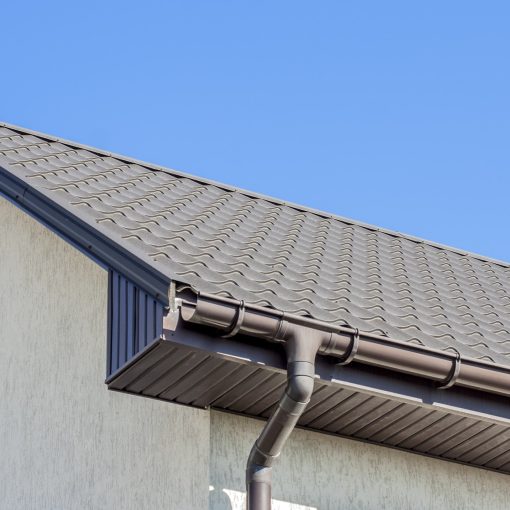Are Rain Chains Really Better Than Downpipes?
Before going into the rain chains v downpipes debate it may be as well to deal with a more basic question i.e. what are “rain chains”? Having made a relatively recent appearance in the UK, one might be forgiven for thinking they represent a revolutionary new idea for rainwater management. In fact the idea comes to us from Japan, having been used there for centuries.
It’s a simple enough concept. Instead of having downpipes to carry rainwater from your guttering at the edges of your roof, you hang chains from the outlets in the gutters down to the ground. Now, water is funny stuff. If you put something like a chain for it to flow over it will follow that down instead of just splashing out all over the place. It’s all a matter of fluid dynamics and surface tension or something like that. We don’t really need to understand the science behind it, suffice to say, it works. Downpipes work well too so which is the better option for guiding rainwater away from the foundations?
Rain chains don’t have to consist of actual chain links. They can be made up of small containers hanging one above the other so that as each one becomes full of water it spills over into the one below all the way down to ground level. This means that rain chains, or kusari doi as they’re called in Japan, can look much more attractive than downpipes and as the water cascades down them many people find the sound pleasant and calming. Others may find it has a diuretic effect!
Rain chains need to be made from non-ferrous material. Ordinary steel will soon rust and look terrible. Galvanised steel is not particularly decorative anyway. Copper is the most popular material as it remains attractive even as it weathers.
So, rain chains can be a more decorative alternative to plastic pipes and the sound of the rainwater running down them can be quite musical. What other advantages do they bring, when compared with the downpipes we are all accustomed to or is that it? In a word, yes; that is it!
Not only do rain chains bring so little benefit but there are some practical disadvantages to consider. Most downpipes are arranged so that they discharge into small drains or gulleys, that carry the water away into underground drains or into soakaways. Rain chains are best used with rainwater containers. They don’t cope well with open gulleys
Very heavy rain simply overwhelms any type of rain chain. The normal western down pipe can cope with a much greater flow of water before being overwhelmed and its outlet directs the flow into the gulley in a far more controlled manner.
Rain chains suffer terribly from wind. Even if the chain is securely anchored at ground level so that strong winds don’t cause it to swing wildly, the wind will blow the water off it so that it goes everywhere. The downspout ends very close to the grid on the gulley so that problem doesn’t arise and all the way down from the gutter to there the water is contained in the pipe so the wind cannot affect it. Those who advocate the use of rain chains advise that if you live in an area subject to heavy rain and strong winds, such as most of Britain, you should have downpipes as a back-up!
Don’t forget also that your normal downpipe doesn’t run in a straight line from the guttering to the ground. Just below the gutter it is angled back to the wall to which it is fastened. At the bottom it ends with a fitting that directs the flow into the gulley. Rain chains just hang down straight, in calm weather anyway, so if there is a path beside the wall of the house they are likely to get in the way of anyone using the path. Traditionally, Japanese buildings have wider eaves than ours so rain chains suit theirs better than they suit ours.
Summary
To summarise: In the UK rain chains look good but are not really a practical alternative to down pipes. They have served the Japanese well for centuries on their style of buildings but then, downpipes have stood the test of time on ours in this country.
For more information on having traditional gutters installed, visit this page here.






